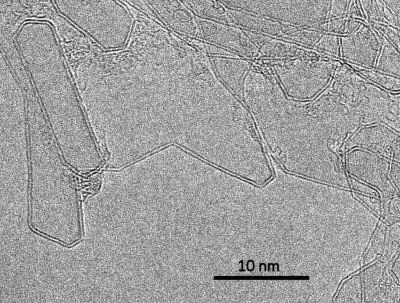With the development of clean energy sources as one of the greatest challenges of the 21st century, the use of sunlight to drive catalytic reactions, and particularly hydrogen production from water splitting, has emerged as a promising route. This project takes advantage of the large library of nanomaterials to produce new hybrids with enhanced properties that result in higher photocatalytic efficiency.
Nature often provides the inspiration for scientific endeavours.
Utilising the sun's light in artificial photosynthetic devices to
produce molecular hydrogen (H2) for use in H2 fuel cells is the subject
of much research. Photocatalytic systems split water molecules into H2
and oxygen. Novel materials with greater efficiency and stability at
lower costs are required.
Scientists are exploring hybrid nanomaterials made of nano-structured carbon and inorganic semiconductors with EU support of the project
CARINHYPH. The team has taken high quality carbon nanotubes and graphene and functionalised them for subsequent integration with the inorganic via in-situ growth in different architectures: nanocarbon membranes coated with the inorganic, mesoporous gyroid hybrids and electrospun structures.
A key aspect of the project is the emphasis on interfacial engineering as a mechanism to control charge transfer processes between the hybrids, thus increase charge lifetime and photocatalytic efficiency. The project has made progress in optimising synthetic routes to achieve. Cutting-edge spectroscopy techniques have provided a unique insight into the electronic properties at the nanocarbon/inorganic semiconductor junction, providing elements to adjust the synthetic routes accordingly.
The CARINHYPH team comprises companies at the two ends of the supply chain. Thomas Swan Ltd. is a fine chemicals company that produces high-quality carbon nanotubes and graphene in industrial quantities. INAEL is an SME in the field of advanced inorganic materials. In order to increase the potential of industrial implementation of the materials a roadmap for industrial deployment is being prepared. It includes Life-Cycle Costing (LCC) and Life-Cycle Assessment (LCA) to ensure sustainability.
In the short-term, CARINHYPH is contributing to the rational design and synthesis of new nanostructured hybrids with improved catalytic performance in sustainable energy applications, such as water splitting, water purification, photoelectrochemistry and photovoltaic devices. In the long term, these nanostructured hybrid systems will contribute to solving the EU energy challenges.

